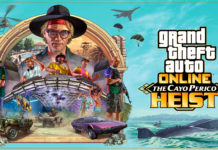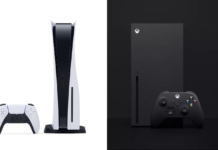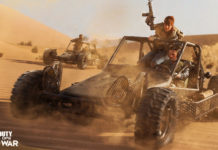As a first-person shooter, Project: Snowblind is yet known to be one of the best in its class. In our interview with John Chowanec, Project Producer of Project: Snowblind for Eidos tells us the key features we need to know about the game.
AMN: Project Snowblind will be the first FPS developed by Crystal Dynamics; what made you decide to enter the genre, and what goals did you set out for Snowblind as far as concept and gameplay experience?
John Chowanec: We’re always interested in trying new things as a studio and changing genres can always be a refreshing way to do that. In all truthfulness, I think when studios like ours break from tradition, you often gain from a fresh perspective. I know we did. When we decided to build an FPS, it forced us to take a look at the competitive landscape, evaluate what was out there, determine what worked in those games, what didn’t, etc. It was then that we could look across the board and find a place to carve ourselves out. We feel we’ve done that with our weapons, level of intensity, etc. I think you’ll notice it right away when you jump into the first mission and the world explodes around you as the Republic launces a surprise attack on your base. Swarms of enemies storm the base while you fight tooth and nail to survive. Later on in the game, you’ll start to see the incredible arsenal available to the player… but more on that later.
AMN: What became Project Snowblind was originally intended to be an entry into Warren Spector’s Deus Ex universe. At what point in the development was it decided to break away from the franchise, and for what reasons? Do any remnants of the franchise and its style remain in the product at this point in development, or is it a 100% entirely separate entity?
JC: When we started concepting the project, we had access to Warren and his team at Ion Storm. They were fantastic when it came to design feedback as some of the tenets we present in P:SB are similar, if not directly influenced by, some of the concepts they helped break new ground on — player freedom, etc. Sure, you’ll see things like player freedom in P:SB, but it’s freedom in a intensly action driven environment. It’s that core frenetic frontline action and futuristic combat that quickly evolved into its own identity. P:SB takes place in its own universe and the game places heavy emphasis on action, weapons, and gadgetry supported by strong single and multiplayer modes.
AMN: Can you give us a brief overview of the plot driving the single-player portion of the game?How important do you feel the storyline is to experience Project Snowblind presents the player; is it essential, or is merely there to create an immersive context for the action? Where there any specific sources that you drew inspiration from regarding the narrative or intended atmosphere?
JC: Players fill the shoes of Nathan Frost. Nate’s a new recruit for an international peacekeeping force known as the Liberty Coalition. When things go wrong during an operation in Hong Kong, Frost is mortally wounded. After an experimental medical procedure, he is reborn as the future of war – a one-man army capable of wielding experimental weaponry and fantastic abilities that far surpass the average soldier.
As the Coalition attempts to pull out of Hong Kong, Frost and the Liberty Coalition uncover a plot that threatens the safety of the entire world. As Frost, players must take charge of the situation and come to terms with his new abilities.
We think there is a balance between storytelling and gameplay. At the end of the day, we want to make sure that the gameplay is as fun as we can possibly make it… we think you’ll be happy with the balance we’ve struck.
AMN: What type of gameplay model has Project Snowblind been created around in terms of advancement through the game? How linear is progression through the game, both in terms of a mission to mission basis (branching paths? Open-ended?) and within the missions themselves (multiple paths)?
JC: In line with the above question, the story follows a narrative backbone — that doesn’t branch. From within a mission, however, there are areas where the player can choose left or right, up or down, above or below. We wanted to design levels that reward people for exploring. Often times, the path less travelled will often garner an advantage of some sort — be it a hidden health upgrade, a nanoboost (which can revive you from near-death), or a stashed weapon. Something a little less tangible is the advantage you can gain by flanking enemy soldiers by going around them and launching a few rockets into their backs, or a well placed grenade, or a spider bot, or a… well, you get the idea.
AMN: Speaking of the missions, how much variety will there be in terms of mission types? Within the general parameters of these mission types what kind of specific objectives will players be asked to complete over the course of a level? For example, Halo 2 – while a fantastic game – merely asks players to clear room after room of enemies. Will Snowblind ask players to do more than wipe out each wave of enemies?
JC: Each mission has a set of non-negotiable primary objectives that you must complete before you can finish the mission. These range from, defending your base headquarters to disabling huge rail laser cannons that are pounding the daylights out of your army to destroying enemy servers to starting a prison riot to create a diversion for a daring rescue!
There are also multiple mission “types” that players will play. First and foremost, there are “Total War†missions. The two key characteristics of Total War missions are density of enemies and the presence of friendlies. Total War missions are the most intense of the mission types — often there are 12-20 enemies and friendlies around you at once. The combination of enemies and friendlies and the sheer number of them helps characters the “feel” of the battlefield experience that we’re shooting for. The friendlies act as a valuable fighting force — in fact, the mission will get MUCH harder if you let them die. If you don’t cover their backs and keep them breathing, you’re going to have more guns trained on you…
We’ve also got what we call “Solo Battle” mission swhich are very similar to Total War — except as the name implies — you’re alone. In these missions, with the absense of friendlies, you have to learn to rely a bit more on your weapons and abilities that you might have initially expected coming from the Total War missions.
Finally, there’s the “Inifiltration†missions. In these missions, not only are you alone, as in “Solo Battle,†except you have to deal with security systems, trip wires, cameras, auto-turrets, etc., making it all the more challenging. Nothing worse than hitting a tripwire and setting off an alarm and a gas trap…
AMN: About how many missions or total game hours will the single-player campaign be?
JC: Expect around 12-15 hours for the single player campaign. Depending on your playstyle.
AMN: What major gameplay features will make Project Snowblind stand out as a significantly different FPS experience from the rest of the Xbox FPS library?
JC: Project: Snwoblind features some innovative weapons, gadgets and abilities with incredibly chaotic battlefield intensity to create a very unique single and multiplayer experience. Consider the sheer variety of the two dozen or so weapons, gadgets and abilities in the player’s arsenal, the concept of “Smart Weapons” and we think you’re in for one hell of an experience.
In the multiplayer realm, players will have full access to clans, stats, friends, etc. Not to mention class based multiplayer (see below) and we think people are going to have mroe than enough to keep them busy with P:SB.
AMN: Describe of the types of weapons players will get their hands on over the course of game (feel free to use as many examples as you like), as well as the facets of the weaponry that truly separate them from the standard fare seen in other first-person properties? What was the thought process that went into creating the player’s arsenal? What did you want to accomplish, and what did you want to avoid in terms of the final weapon selection?
JC: Heh. Where do you want to start? As I mentioned above, there are about 24 different weapons, gadgets, demolitions and abilities available to the player. Since the game takes place in the near future, everything starts out pretty familliar. You’ll see some of the staples: the silenced pistol, carbine machine gun, shotgun, sniper rifle and a rocket launcher. As the game progresses, you’ll see some of the more experimental weapons: the Flechette Gun and the HERF gun notably.
While some of the staples will seem familliar, each weapon also features an alternate fire mode. Take the shotgun, for instance. While the primary fire of the shotgun is something you’d expect — a room clearing blast of pellets, the alternate fire mode is incredibly versatile. The Alt-Fire of the Shotgun fires what are essentially sticky, molten, mini-bombs that adhere to anything: terrain, vehicles, physics objects and… yes… people. Mark my words, the first time you land and entire set of sticky bombs on an enemy and watch him panic and run back to his buddies and, BOOM, detonate, you’ll remember it… 🙂 And then figure its use in multiplayer where the gratification of knowing you just panicked a human on the other end — who in turn is running around about to detonate. The mini-bombs don’t detonate immediately — they explode based on a timer. We’ve had guys here in the test lab stick people in multiplayer only to get multiple kills with one shot: 1 for the guy they attached the sticky bombs to, and 3 or 4 more for the other members of his team who were too close to the… well… blast of their buddy blowing up.
So… that’s just ONE of the weapons… let’s take the Flechette Gun next. This is one of the more futuristic weapons you will see in P:SB. The Flechette is an energy weapon that fires a ricocheting energy ball that you can use to bounce around corners, off ceilings, etc. to ambush unsuspecting enemies. Its alt-fire is one of my favorites in the game: the Attack Drones. These little guys are one of our “Smart Weapons” that you’ll be able to play with in Project: Snowblind. One of the things we noticed early on when dealing with 12-20 guys on screen at once is that your attention has to split itself between all the enemy hostiles who are pressing down on you. This is where the Smart Weapons come in. Fire off the Attack Drones and let them deal with some of the enemies for you. They’re an AI driven alternate fire that creates a swarm of intelligent energy drones that will scour the battlefield and search out enemy hostiles to kill (on your behalf…) These are especially fun in large groups of enemies. The enemies panic when you fire the Attack Drones and will actually turn on the drones, taking their fire of you (or your friendlies). It is not uncommon for an entire group to panic and fire on the drones, only to cut their own guys down in the process.
Other Smart Weapons include the Spider Bots, the Sniper’s Alt-Fire which changes the allegience of an enemy on the battlefield and the player’s ability: electrical storm (more on that one later).
One of the other really cool “weapons” (I hesitate to call it that…) is the Riot Wall. There’s some screens of it floating around on the web, but the riot wall is basically a portable energy shield that the player can deploy. Again, given the density of the battlefield, cover becomes very, very important to the player. Especially when you turn a corner and are facing a tank. The Riot Wall expires over time or if it takes too much damage. But again, this unique “grenade” can come in handy if you’re being pressed down upon by two groups of enemies in a hallway for example. Throw a riot wall down to stall one group and block them in, while you spin around to deal with the other. Or… use it to prevent a enemy from getting to an alarm switch. Or… use it in multiplayer to trap a pesky camper, wall off and protect your own flag, etc.
I could go on about each weapon, really. Check them all out — they each have their own advantages waiting to be uncovered…

AMN: What types of abilities will players have at their disposal as a result of the upgrades the main character has received? How do they factor into the gameplay, and how than their functionality be combined with that of the weapons within a combat scenario?
JC: Aside from the weapons the player physically holds, there are a host of special augmentations at the player’s disposal. You’ll gain everything from enhanced vision to invisibility to electrical storm. Vision Enhancement is the first augmentation you’ll get, but perhaps could be one of the last ones you’ll use frequently. The really cool part of the enhancements is that they lend themselves well to being used in combination with other weapons in your arsenal. Enhanced Vision allows you to see enemies at a far distance — making use of the sniper rifle easier… as one might expect. It also allows you to see heat signiatures through walls. This comes in handy when you gain the Rail Laser, which allows you to shoot through solid objects. Combine the two and you can be killing threats through walls before they can even see you coming.
Heh… think multiplayer on that last bit. 😉
Later in the game you’ll also access cloaking, which turns you temporarily invisible, Reflex Boost, which slows time significantly so that you can get the jump on enemies. And then there’s my favorite augmentation, Elextrical Storm. Electrical Storm is another of our “Smart Weapons” as is a very, very aggressive augmentation. Think of Jedi Lighting from Star Wars and you’ll get an idea of what Electrical Storm provides. It, like the Attack Drones, scours the battlefield and rather quickly kills any nearby threats.
AMN: In addition to using high-tech weaponry and various special powers, what other abilities will be at the players disposal? Will they be able to give orders to friendly units in the missions that feature them, or perhaps drive vehicles?
JC: Well, we’ve discussed some of the weapons and abilities, what we haven’t yet talked about are some of the gadgets. There’s two major gadgets available to the player: the Kicker and the Icepick. The Kicker is somewhat of a Physics Gun. One of the cooler bits of our engine is the proprietary physics system that our tech team has developed. The Kicker allows you to manipulate those on the battlefield to help provide you with dynamic cover. Got an enemy hiding behind a large metal box in the distance? Pull out the Kicker and pull it away from him towards you. Now YOU have the cover and the enemy is exposed. You can also use it to grab pickups in the world — guns, health, ammo, crates, etc. This can come in handy when you’re pinned down by enemy fire and need to grab a distant health pack.
Then there’s the Icepick. The Icepick fires barbs that attach to any electrical systems. Once you attach a barb to an object, it will allow you to tremotely ake it over. You can use the Icepick to take over enemy cameras to scout out areas, or to dominate an auto-turret to clear out a room. My favorite use, however, is using it to assume control of enemy robots. It’s great fun to use the enemy robots against their owners… Some of the enemy bots have immense firepower.
There are also vehicles and emplacements that the player can man. Everything from a .50 caliber emplacement to a 12 foot mechanized Walker will be available to the player (and the enemy AI if you’re not careful).

AMN: Given the unorthodox nature of the weaponry at the player’s disposal, how much time has gone into developing an AI system that reacts convincingly in the midst of combat? What types of behaviors will players observe as they play through the game, both in terms of group dynamics and individual reactions? Similarly, how advanced is the AI of friendly units, and how big a part of the gameplay are they (as opposed to Halo 2, where they are essentially very talkative walking corpses)?
JC: We’ve spent a significant amount of time building our AI. As I mentioned with our Physics system, it was important that the enemies and friendlies could react to an everchanging battlefield. Our AI will dynamically reason the terrain to determine where they are and are not safe from enemy fire. They know what cover they can duck behind, etc.
Enemies and friendlies also react intelligently to incoming rockets, tank shells and grenades. Both enemies and friendlies will do everything from run from an incoming grenade to diving on it to save their buddies to kicking the grenade back from whence it came. It’s pretty startling to throw a grenade onto the battlefield only to have it come sailing back your way.
AMN: What can you tell us about the graphics engine powering Project Snowblind, as well as the stylistic choice that have been made regarding the game’s overall look (eg. Locations, color palette, etc). What are the strongest points of the engine, the aspects of the technical presentation that players will really be wowed by?
JC: The engine has been built from the ground up over the years here at Crystal, evolving internally from project to project. It’s important to note that we’ve spent a significant amount of time optimizing the engine to take advantage of the genre in which we’re developing. Everything from the collision to the physics has been optimized with Project: Snowblind in mind — which is exactly why we can push as much intensity and action as we do without taking a dip in framerate. It is something we are incredibly proud of and is testament to the talented teams here at Crystal.
In terms of the visual style of the game, it was just as important to us that we set this game in the near future, but pull away from the “space station gray” and rusted metal look of a lot of the near-future games. I think the bold choice in color really helps establish the Project: Snowblind world. Furthermore, players will notice quite a few post-filtering effects running — which give the lights the soft-glow, really enhance alot of the augmentations, etc.

AMN: Please describe the multiplayer component of the game. What multiplayer options will there be in terms of gameplay modes and Xbox Live functionality such as clan support, voice chat, etc? Will there be the option for splitscreen or system-link play? How will the multiplayer portion of the game take advantage of the unorthodox weaponry and special abilities to provide a fresh gaming experience?
JC: In terms of the game modes, you’ll see the classics: Deathmatch, Team Deathmatch, Capture the Flag, etc. And then you’ll see some more contemporary modes: Assault, Tactical Assault, Demolition and Hunter. Each of these modes offers something a bit differnt, from the straightforward run and gun of a Deathmatch to the hectic and ever-changing Hunter mode, where a token dictates power. In Hunter, a Hunter Token is placed on the map and players score points for either killing the hunter, or as the hunter, killing the people hunting him. It is somewhat of a king-of-the-hill mode. The Hunter, however, is permanently invisible and has access to every single weapon and augmentation available in multiplayer.
Multiplayer also features a class-based system. Each class: Grunt, Scout, Heavy, Sniper, Berzerker and Agent each have a different loadout available to them. Advanced players will learn to use classes for specific modes and will often balance out a team by selecting the right class whatever that may be. Each class not only features a specific weapon set, but also specific grenades and a single augmentation. As you might imagine, the diversity of the weapons and augmentations can create quite a unique multiplayer experience.
The Class system, by its very nature, limits the loadouts accordingly. We have an option called “Arms Race” which will expand the current class by offering the loadout of the person you killed to become available to you. So, you can start as a Sniper, kill a Enemy Heavy Class and gain access to the Rocket Launcher. This can be quite fun in 16 person games…
We also support Stats, Clans and Friends as well as Voice Chat, obviously.
We feature XBox Live as well as System Link play for anyone’s who may want to host a LAN party.

AMN: The game is currently in development for the Xbox, PS2 and PC; will there be any platform-exclusive features or other key differences between the three versions?
JC: Both the XBox and PS2 versions will feature an exclusive multiplayer mode: XBOX – Demolition and PS2 – Assault. The XBox version will also feature higher resolution textures, where possible, as well as more detailed weapon models. The XBox will also support downloadable content so that we can keep fresh maps coming to all you hungry gamers. 🙂
Thank you so much Mr. Chowanec for your time and effort for this interview!
Thank you so much for your time — we look forward to hearing from all you FPS fans once you get to spend some time with Project: Snowblind. It’s something we’re incredibly proud of here at Crystal Dynamics. Thanks again.










